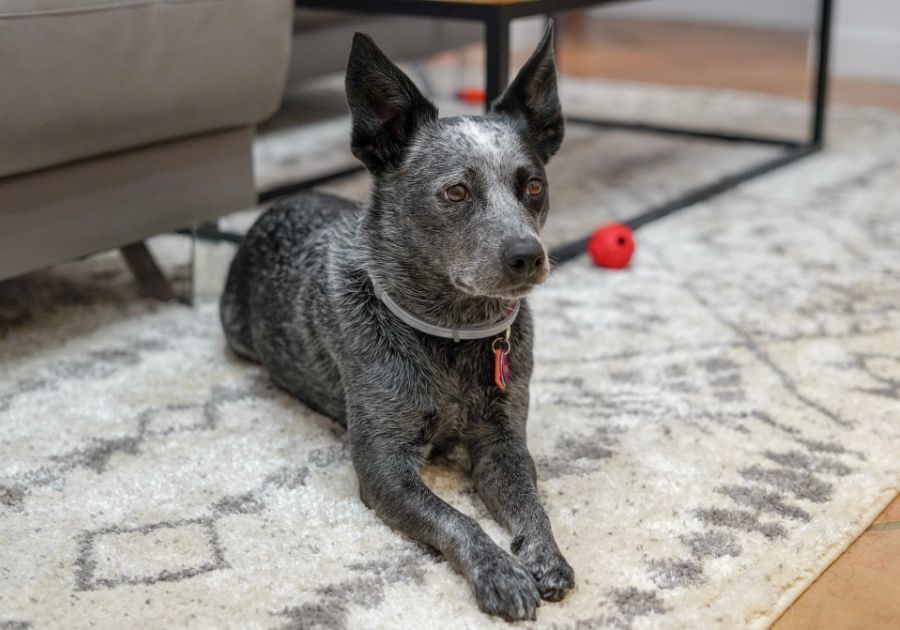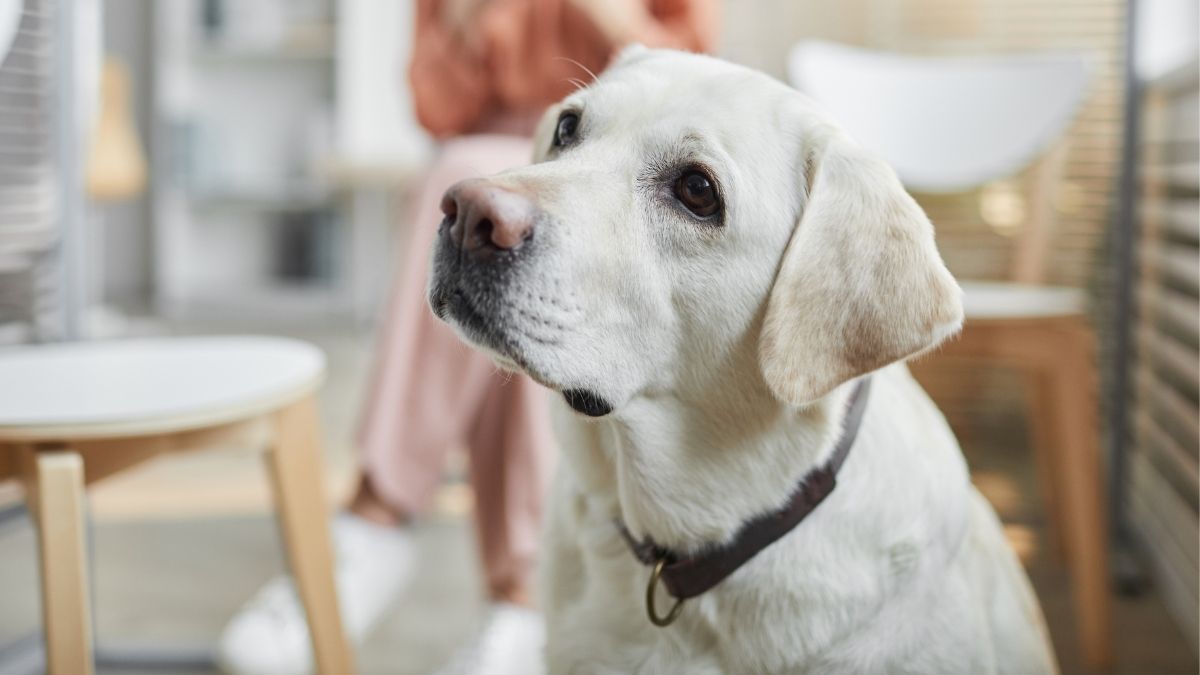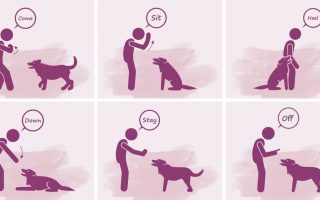Dogs can be lovable, even when they misbehave. We often give them a “pass” and might even think it’s cute, especially if the dog is a small one.
However, while a little mischief is appropriate, your dog should learn that there are lines not to cross.
We’re not advocating harsh punishment, but you have to set firm boundaries for your dog.
When you consider dog boundaries, they might look limiting. You want your dog to have fun and we’re all for that.
Paradoxically, setting boundaries gives your dog more opportunities to have fun. It also grants them freedom and reduces your worries.
This article will enlighten you more on the many benefits of teaching your dog boundaries.
What Are Dog Boundaries?
Dog boundaries simply entail letting your dog know what’s acceptable and what isn’t.
This could mean limiting access to some rooms, teaching your pooch basic commands that can be used to stop it from exhibiting certain behaviors, and enforcing your leadership in the family.
According to experts, boundaries keep your dog controlled, help it make good choices without your constant supervision, and are good for safety.
Generally, there are different types of boundaries you should teach your dog. Some of them are:
- Respecting you as the leader.
- Receiving visitors and approaching strangers
- Knowing what to eat and what not to eat.
- Relating with kids, pets, and other dogs.
- Having limits on which rooms to go to.
- Doing its restroom business at a specific place, not around the house.
Every dog needs boundary training, regardless of size or even personality.
Some dogs indeed have a nicer temperament than others, but even that affection can become a problem without boundaries.
Here are some detailed reasons you should set boundaries with your dog today.
10 Reasons To Teach Your Dog Boundaries

1. Your dog will have more off-leash opportunities
There’s nothing that spells “freedom” to a dog more than going off-leash during a walk. It gets the chance to explore, sniff around and let out its instincts.
However, if your dog hasn’t learned how to respect your boundaries, letting it go off-leash is a recipe for disaster.
It might run off, frighten small animals, and scare passersby.
Now, a dog with a good sense of boundaries will listen to your recall command if it starts to stray.
It will also be polite enough not to bark or growl at passersby and can explore without worries. Fewer things are better than that.
The dog without that sense of boundaries will have to go out on a leash, which limits its freedom.
2. Your dog will also behave better on playdates
No one wants their pooches around wild and unrestrained dogs.
If your pet dog is notorious for its lack of boundaries, don’t be surprised when other pet parents turn down your invitation.
An unrestrained dog is also more likely to get into a fight at a dog park, even when it isn’t predisposed to animal aggression.
When you train your dog to recognize and respect boundaries, it can play without dogs and not feel the need to get aggressive.
And if a fight breaks out, it will recognize your voice and retreat.
3. Boundaries improve human-dog friendship
It can get frustrating for you and damaging for your dog when you have to deal with bad habits that stem from a result of lack of boundaries.
Many dogs get abandoned at rescue shelters after getting too wild for their owners. You can avoid that by setting boundaries for your dog.
With boundaries, you waste less time and mental energy trying to deal with a bad habit and rather expend that towards bonding with your dog.
With lesser irritating behaviors, the moments you spend with your dog will also be enjoyable.
4. Boundaries can save a dog’s life
Besides the freedom and better experiences your dog can enjoy with boundaries in place, the latter is instrumental to your dog living a longer life.
When a dog can easily respond to basic commands, it would drop anything dangerous that it picks up.
Also, boundaries will prevent it from running crazily out of your yard and into the road where it is likely to get hit by an oncoming vehicle.
Good boundaries can also stop your dog from eating something detrimental to its health.
Nothing holds back an untrained dog from stepping into your kitchen and grabbing a huge bite of that chocolate cake you kept on the counter, and we all know what that can do.
But if your dog knows the kitchen is off-limits, eating accidents are less likely to happen.
Dive Deeper:
What Toxins Can Cause Seizures In Dogs? Careful!
5. Walks are more enjoyable
Walking a dog can either be a thing of joy or a moment of frustration, and that depends on how well-mannered your dog is.
A badly trained dog will turn an otherwise calm walk into horror.
It might pull at the leash, terrorize people, try to run off or across the street, bark endlessly and ignore your protests.
The thought of walking such a dog isn’t appealing, but unfortunately cutting down a dog’s walk is worse.
A dog that doesn’t get the required level of exercise might get restless, and the day you take it outdoors it’ll be a tug-of-war.
Why not avoid that by teaching your dog good manners? That way, your dog gets more walks and you’ll be less stressed.
Dogs with good boundaries turn out to be gentle males and sweet females.
When it accompanies you to an occasion like a child’s birthday, it’d be more of a delight than a nuisance.
From performing tricks to wow others to keeping itself controlled amidst the festivities, a well-trained dog will give you peace of mind and make you enjoy the event more.
The same benefit applies to trips. You wouldn’t want your dog causing a scene at an airport or ruining a road trip with erratic behavior.
The chances of embarrassment are higher when the dog lacks good manners, and this starts with neglecting boundaries.
7. Your dog will be more polite in public places
Whether at a park, a hotel, or a store, everyone will breathe better when a pet parent has a dog with good self-control. The well-mannered dog will even make new friends.
Even if it’s aloof by nature, good boundaries will make it receive compliments and touches from strangers with politeness.
You can imagine what problems a badly trained dog will cause in public places.
No one wants to get bit by a dog, nor would you want to be driven out of a store because you couldn’t “control Mikey”.
8. Prevents behavioral problems
Some behavioral problems don’t seem like much, but when left unattended they worsen.
A dog that barks a lot will continue till it becomes relentless, disturbing you and your neighbors.
Even enthusiastic dogs that jump on people can become disturbing.
Even more, these behavioral problems may put people at risk. Aggressiveness is one example.
Statistics report that over 4.5 million dog bites happen in the United States in a year, and 800,000 are so serious, that they require treatment.
A well-mannered dog isn’t just good for its owners, but for society as a whole.
9. Makes visitors more secure
Again, we can’t stress how safe a well-trained and polite dog is to everyone around. Generally, people are wary of dogs, especially those who are not dog people.
It gets worse if your dog has an intimidating appearance.
You’d have to convince any visitor that your unchained dog won’t pose any harm, and that can only be guaranteed if your dog knows its boundaries.
Also, some dogs are so enthusiastic towards humans that they may overwhelm your guest by being too clingy and lovey-dovey.
Some people won’t appreciate having a dog jump on them or lick them. Boundaries can help prevent this situation.
10. Boundaries boost a dog’s confidence
With every command a dog learns, the off-leash moments it has, the praises it gets from people around, and the good fun it gets, it becomes more confident.
This is against the mistaken belief that a dog (or human, in fact) will be more confident when it is left unrestrained.
Setting boundaries is a win-win decision both for you and for your beloved pooch.
6 Tips For Setting Boundaries With Your Dog

With setting boundaries and training in general, the best time to start is at the puppy stage.
Adult dogs are harder to train, and if you adopted an adult who shows a lack of boundaries and other behavioral issues, you might need a professional trainer to help out.
Here are some tips made available to us, thanks to Cesar Millan:
1. Define your space
According to Cesar, dogs use nonverbal space to define their space.
This could mean pushing another dog away from a corner, hovering over its favorite toy, and giving off a protective vibe.
They often achieve this without growling and barking, except when the other dog tries to raise a challenge.
A puppy is less likely to raise any challenges, so it will be more willing to understand and respect your space.
You can hover over your couch or even the doorway to a room you don’t want your dog to go into. It would pick up the cues in no time.
2. Be the leader always
Dogs need to know that you’re the one in charge, stubborn ones even more so.
There are unspoken ways you can make your pooch understand this, from stepping into a place first to feeding it after you’ve fed every member of the family.
During walks, your dog should stay behind or beside you, not at the front. These little acts will let the pack positioning sink in.
This is why you should have a dog that fits your experience level and your family.
Not all dogs will freely accept your authority without challenging it. For these stubborn dogs, a firm and confident owner is needed.
3. Use the art of delayed gratification
Delaying gratification helps your dog stay in control, and it would seek your permission before acting rather than doing so on its impulse.
It also teaches the dog that it can’t always get what it wants, thereby reducing the chances of it begging for food at the table.
You can delay gratification by not giving your dog a treat the moment it does a trick, or by teaching it to wait till you place its food at a particular spot before it eats.
4. Time your correction
Corrective measures should be used at the moment your dog is about to do something forbidden, not when it has already done it.
Cesar gave the example of getting on the couch. You should go “Tsch”, “No” or “Down” when your dog is about to jump on the couch, not when it is already on it.
This teaches the dog to associate the correction with the behavior.
5. Be consistent
As the cliche goes, Rome wasn’t built in a day. For your dog to learn and respond to your boundaries, you must be consistent.
It means if you stop the dog from getting into the kitchen one day, you need to consistently do it.
Whenever you want to make an exception, your dog should know that it is your decision.
Also, every member of your family should reinforce these boundaries.
Failure to do this and your dog would either get confused or take advantage of the situation to become dominant (which tends to happen with stubborn and independent breeds.)
6. Don’t be harsh
The goal of boundary training is to make your dog polite and well-mannered, not turn it into a canine slave.
While you should be firm with the boundaries, do not use punishments to enforce them.
This would only end up damaging your dog, leaving it confused or even more stubborn.
Be polite, and reward it with positive reinforcements when it succeeds.
Frequently Asked Questions
Should you set boundaries with your dog?
While it is tempting to pamper your dog and let it have unrestrained rights to do as it pleases, your dog will be better if you establish and reinforce boundaries.
Bad behaviors and other consequences that come with a lack of boundaries are disturbing for the dog as it is for its owner.
What are good boundaries for dogs?
Good boundaries involve setting limits to what your dog can do and where it can go. To enforce these boundaries, basic obedience training is required.
Teaching your dog to Sit, Leave It, Stay, Wait, etc. helps it respond better to your boundaries.
Why are boundaries important for dogs?
Boundaries are important for many reasons. Not only does it curb the bad habit, but it also teaches your dog good manners.
Boundaries also ensure your dog doesn’t become a societal problem.
At what age do dogs test boundaries?
Dogs are known to start testing boundaries between 4 to 9 months. They’d try to do stuff to see which ones they can get away with.
Final Thoughts
It might be funny to watch misbehaving dogs in Hollywood, but in reality, these dogs cause more tragedies than comedies.
Teach your dog to have good manners by ensuring that boundaries are in place, and watch your dog thrive.
Build boundaries with your dog, you’ll be happy you did.
You May Also Like:
Complete Guide To Training Your Puppy







